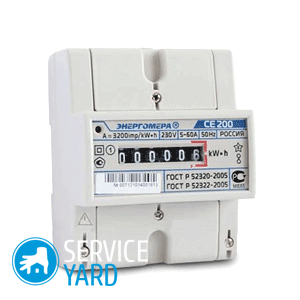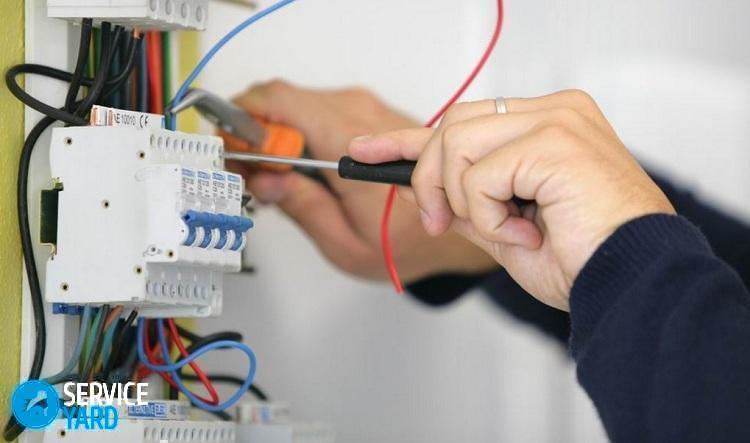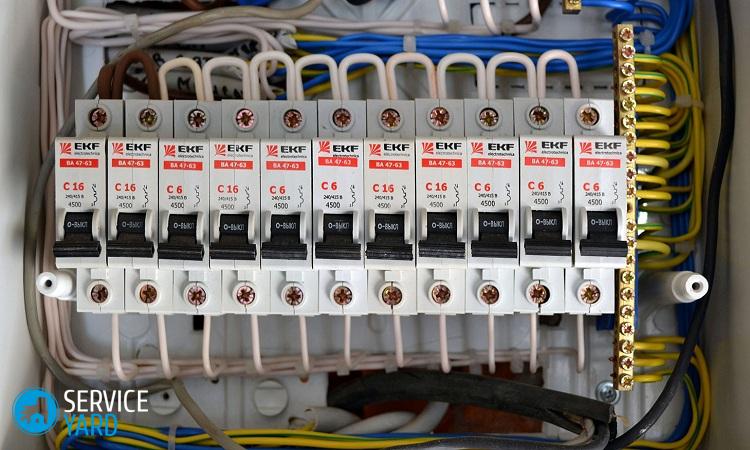Electricity meter installation

Self-installation of an electricity meter is not such a difficult job. But connecting accounting devices is a very serious matter, so you need to strictly observe a certain procedure. You can legitimize this event by contacting the company of the electricity supplier to draw up a contract and obtain a package of permits. As a rule, the meter for electricity consumption is the property of the owner of the apartment or house, but all work with it can only be performed by a representative of the corresponding service.
to contents ↑Installation specifics
In most cases, the installation of the device is also carried out by specialists of this company. The consumer is responsible for the safety of the accounting equipment and security seals. Therefore, installing an electric meter in an apartment on its own is advisable only with a complete replacement of the electrical wiring or if it became necessary to replace faulty equipment.
The size of the electricity bill depends on the correct installation of the meter. For this reason, it is necessary for some time to monitor its serviceability. This can be done in the following ways:
- Check on self-propelled with removal of load.
- Checking the correct installation.
- Calculation of the error of the measurements.
Important! Counters are placed in apartment buildings in special distribution boards. At the request of the owner, you can place the meter in the apartment, but for this you will need to equip a switchboard specially designed for it.
In a private house, as a rule, an utility room or vestibule is allocated to accommodate an electric meter. Currently, suppliers require placement of accounting equipment in such a way that the inspector can take readings from the electricity meter without entering the territory of the household. In this case, unscrupulous users do not have the opportunity to make illegal manipulations with the device.
to contents ↑Accounting Classification
The main classification criterion by which accounting equipment is divided is the principle of action. Distinguish such varieties of electric meters.
Induction
The functioning of these devices is based on the principle of electromagnetic induction. They are distinguished by reliability, high measurement accuracy and low cost. Until the beginning of the “zero”, such devices were the most common. Today they do not meet the requirements for electricity metering.
Important! Devices are sensitive to the influence of a magnetic field and to changes in air temperature. In addition, many home-grown “kulibin” invented many ways to slow down or even stop the aluminum disk that is part of the device. For such actions, transformers and neodymium magnets of high power are used.
Electronic
These devices have become a good alternative to obsolete induction devices. They fully satisfy the increased accounting requirements. This equipment is compact, provides a good level of accuracy. In addition, the most modern models provide an opportunity for accounting at several rates and at different times of the day. To “trick” this device is more than difficult.
Distinguish single and three-phase models of accounting devices:
- The former are cheaper and easier to install. Most of the apartments have a single-phase network. There are meters that allow you to take into account active and reactive electricity. However, when installing electricity meters in an apartment, devices are used only to account for the consumption of active electricity.
- Installation of two- and three-tariff electricity meters is associated with obtaining special permits from the supplier company and drawing up a special contract. Due to the significant increase in the load on electric networks, supplier companies motivate the population to install just this type of meters.
Important! It makes sense to purchase and install a two-tariff meter only if significant energy consumption is accounted for by hours outside of peak loads on the power grid. The device itself is not cheap, plus programming costs.
- The use of three-phase metering devices in apartments is not prohibited, but they are more often used in factories.
Another classification feature for electric meters is the value of the rated current and voltage. For rated current exceeding 100 A, metering devices are installed through current transformers. These devices are used for three-phase networks and are designed for powerful consumers. Installation of metering devices in this case is performed only by specialists.
to contents ↑How to install an electric meter in an apartment?
Before you begin, decide where exactly you are going to install the device. Also prepare the entire set of tools you need. Popularly single and three-phase accounting equipment on a finished basis.
You will need to install the electric meter, in addition to the accounting device itself:
- Protective shield.
- The low voltage indicator is unipolar.
- Pliers and screwdrivers with handles made of dielectric material.
- Terminal block.
- Fasteners (nuts, screws, bolts).
- DIN rail.
- RCD and circuit breakers.
The location of the counter on the wall is strictly vertical. The mounting point is a wooden shield or metal sheet. You will also need a protected box.
Important! There are no clear standards for the height of the device. At the same time, mounting the device without free visual control is unacceptable. The optimal installation height is considered to be approximately 1.7 m (adult eye level).
The algorithm for installing an electric meter in the apartment is as follows:
- Using screws, mount the DIN rail in the electrical panel. All electrical equipment will be attached to it in the future.
- Using special fasteners or a DIN rail, attach the counter to the shield.
- In specially designated places in the shield, install terminal blocks for grounding and neutral working wires.
- Install circuit breakers. Their number depends on the number of consumer groups.
- Install a residual current device.
- Connect the wires that go to the load to the lower terminals of the circuit breakers. Connect the top terminals of the machines with jumpers. Jumpers can be bought in the electrical goods store or made independently.
- Connect the meter to the load. The second contact in this case is connected to the phase, and the fourth - to the neutral wires. To connect the device to the network, connect the first contact to the phase conductor, and the third to the zero.
Three-phase electric meter: connection features
The installation order is no different from a conventional single-phase device, but there are also such specific points:
- Since “three-phase” are used for networks with significant loads, during the installation process, additional voltage or current transformers are used.
- Strict adherence to the phase sequence. If one meter is replaced by another, then the wiring to the terminals should be exactly the same as before. If a new device is being installed, then the correct phase rotation is determined by the phase indicator.
- Installation of a circuit breaker in front of the meter is mandatory from a safety point of view. To avoid troubles from the controlling organization, it is necessary to enclose the circuit breaker in a special case, which the supplier company will seal.
Stock footage
For the successful installation of electricity meters, all the necessary tools and basic knowledge of electrical engineering are sufficient. But remember that the final sealing must still be performed by the representative of the energy supplying company, otherwise the data will be considered invalid. I wish you success!
- How to choose a vacuum cleaner taking into account the characteristics of the house and coatings?
- What to look for when choosing a water delivery
- How to quickly create comfort at home - tips for housewives
- How to choose the perfect TV - useful tips
- What to look for when choosing blinds
- What should be running shoes?
- What useful things can you buy in a hardware store
- Iphone 11 pro max review
- Than iPhone is better than Android smartphones





